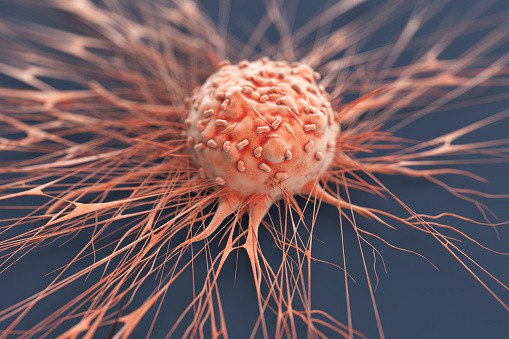
Cilia And Cancer: Understanding The Connection With Cutting-Edge Datasets
Cilia are essential to the human body, functioning as antennae that detect disease-causing factors and send signals for cell repair. However, cilia can become dysfunctional when mutated or damaged by environmental toxins, leading to various diseases including cancer. In recent years, medical researchers have been exploring the connection between cilia and cancer in an effort to develop more effective treatments. With cutting-edge datasets now available, we are closer than ever before to understanding the mechanism behind this connection.
In this article, I will explore how advanced data sets allow us to gain insights into the relationship between cilia dysfunction and cancer development. First, I will discuss what’s currently known about this complex interaction from a molecular perspective. Then I’ll explain how these new datasets give us unprecedented access to valuable information on how ciliary dysfunctions lead to different types of cancers. Finally, I’ll look at some potential therapeutics based on our newfound knowledge.
By delving deeper into the role of cilia in cancer development with state-of-the-art datasets, we can better understand how best to treat certain cancers and improve patient outcomes overall.
Definition Of Cilia
Cilia are some of the tiniest, yet most complex and essential components of cells. The structure and functions of cilia can be perplexing to understand but their importance in biology cannot be overstated. Cilia come in a range of shapes, sizes and types depending on its context and purpose within the cell; for example, primary cilia extend from the surface of many types of cells while motile cilia line fluid pathways like respiratory tracts or fallopian tubes.
In terms of general characteristics, all cilia share certain features such as having a 9 + 2 arrangement which consists of nine peripheral microtubules arranged around two central ones that form a cylinder-like shape with an axoneme at its core. Furthermore, cilia have specialized motor proteins called dyneins along the surface that allow them to move liquid and particles throughout the cell by beating back and forth.
With this intricate machinery playing an integral role in cellular function, it is no wonder why researchers are now investigating how cilia may be connected with cancerous activity. Moving forward then, let us explore what relationship lies between these microscopic structures and cancer.
Relationship Between Cilia And Cancer

Cilia are microscopic hairlike structures found on the surface of certain cells, and they play an important role in many biological processes. Recent research has suggested a possible link between cilia and cancer. While more studies need to be done to fully understand this connection, current evidence suggests that cilia may have a major impact on how tumors develop and progress.
Recent advances in technology have enabled researchers to study cilia-cancer connections with cutting-edge datasets. By analyzing molecular data from different types of cancers, scientists can begin to uncover new mechanisms by which cilia influence tumor growth and progression. Through these datasets, we can gain insights into the complex relationship between cilia and cancer, as well as potential treatments or interventions for individuals affected by the disease.
In addition, these datasets provide us with valuable information about cellular pathways associated with both healthy cell development and pathological conditions such as cancer. These insights help further our understanding of the underlying biology behind diseases like cancer, allowing us to identify effective strategies for prevention and treatment.
Use Of Datasets To Investigate Link
I was fascinated when I first heard about cilia and cancer, the connection between them, and how datasets can help us investigate it. It’s incredible to think that something like this could be explored by collecting data from around the world!
Datasets provide an invaluable tool for researchers looking into the link between cilia and cancer. By studying these datasets, we can gain a deeper understanding of the dynamic relationship between these two conditions. We can learn more about how genetic mutations affect cell behavior in both cases, or how alterations in cellular pathways may lead to changes in disease progression.
Additionally, the analysis of large-scale datasets helps us identify correlations between different variables related to cilia and cancer that would otherwise remain undetected. This valuable information gives us a comprehensive view of the connection between cilia and cancer, allowing us to develop new strategies for diagnosis and treatment.
The use of datasets provides a powerful means of investigating and furthering our knowledge on this important subject. Not only do they allow us to uncover patterns of association between cilia and cancer, but they also give us insight into other potential factors influencing disease development such as environmental exposures or lifestyle choices. With continued research using high quality datasets, we are sure to make great strides towards better understanding of this fascinating topic.
Conclusion
It is clear that cilia play a significant role in the development of cancer. With advances in technology, datasets are now providing us with an unprecedented level of insight into this complex relationship. By leveraging these datasets to better understand how cilia and cancer interact, we can unlock new opportunities for prevention, diagnosis, and treatment.
As researchers continue to push the boundaries on uncovering more information about this intricate connection between cilia and cancer, it is our duty as medical professionals to ensure that this knowledge is translated into meaningful solutions. We must strive to use data-driven strategies to create treatments tailored for each individual’s unique needs. Only then will we be able to make real progress against this devastating disease.
Our understanding of the link between cilia and cancer has come a long way over the years but there is still much work left to do before we can finally put an end to its effects. Through greater collaboration among researchers from diverse fields, combined with continued investment in cutting-edge datasets, we have great potential to reach our goal: finding effective ways to prevent and treat cancers caused by abnormal ciliation.
